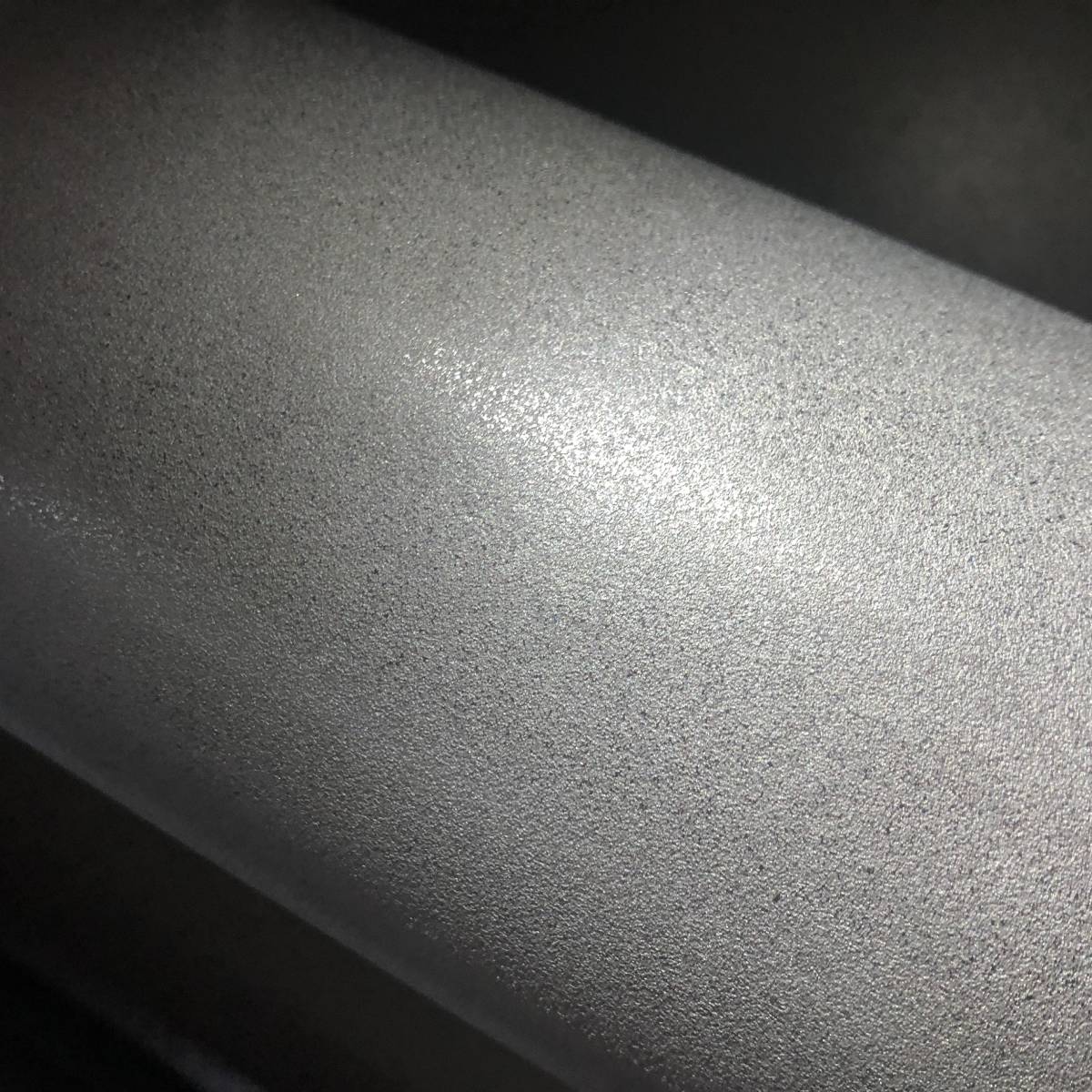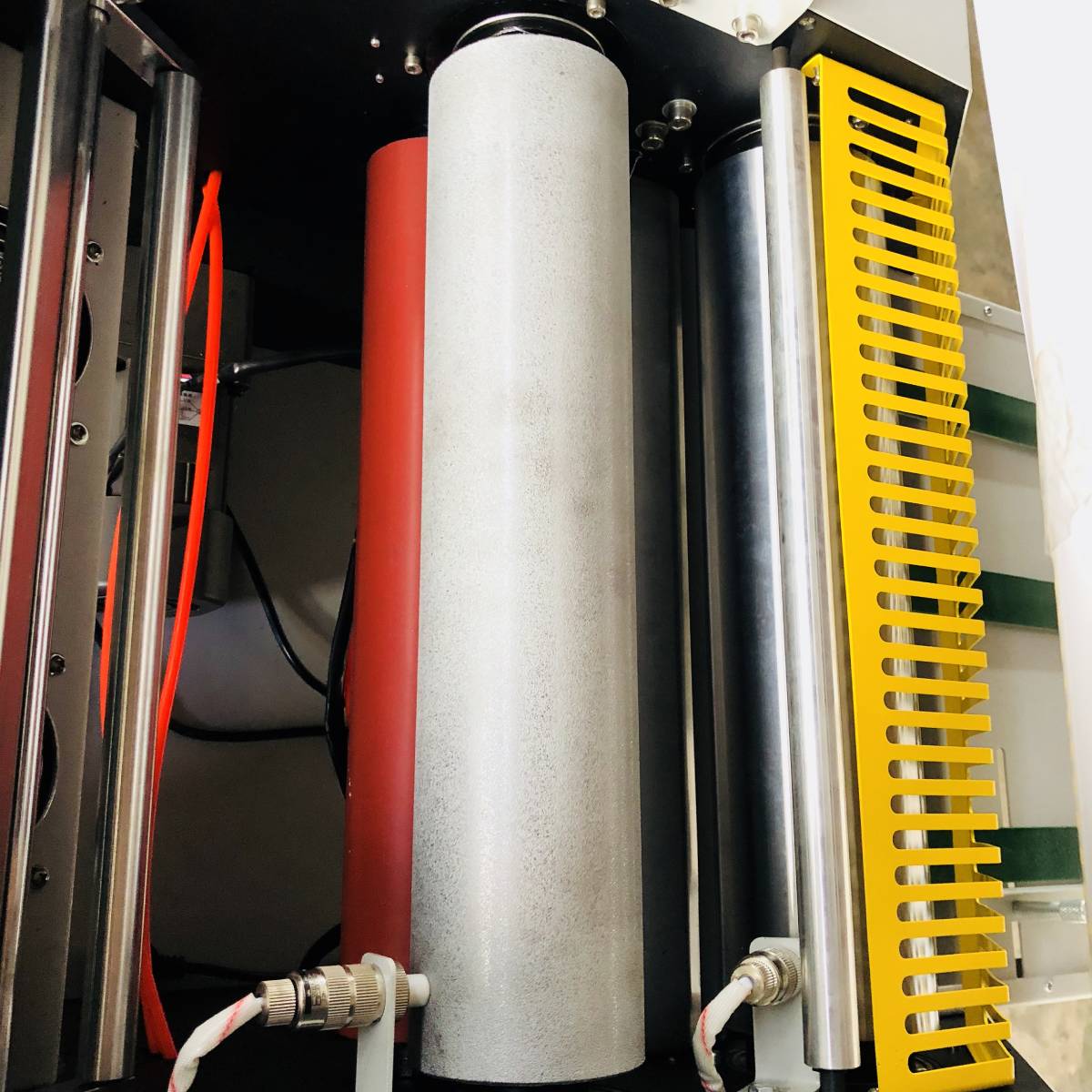laminating machine——SMFM-390F/520F
What is the machine parameter of the machine?
It's a Digital automatic-cut laminating machine with Embossing, oil heating, and pulling off. We have two types of this model. They are SMFM390F and SMFM520F. The different numbers represent different widths of their size. As you know, the width depends on the max paper size. Thus, the max paper size is also different from each other.
On the other hand, the other parameters are all the same as the other one. Their operating speed is 0-13m/min, and their laminating temperature is 50~120℃. Furthermore, the total power is 3kw. Besides, the pressure is 0.1~0.5MPa. At last, the max paper size is 370mm, and 485mm. And the dimensions(L×W×H) are 1.74×0.66×1.35m, 1.74×0.79×1.35m.

What is the advantage of pre-coated laminating?
1. The color difference after pre-coated film is slight.
2. Simple and easy to use, saving operation time.
3. No blistering, wrinkling, or delamination.
4. The effect of pre-coated laminating is better than traditional cold-glue pre-coated laminating (oily, water-based), and the product can be stored for a long time without yellowing.
5. No solvent pollution, making factories safer and more environmentally friendly, and workers healthier.
What are the crafts of water-based laminating?
The laminating machine manufacturer explained that, as we all know, the lamination of printed matter is one of the surface finishing processing technologies of printed matter and is an auxiliary printing process. , The purpose of enhancing the aesthetic effect, making it water-resistant and wear-resistant, is an effective means to improve the grade of printed matter and the value of commodities. Therefore, to measure the pros and cons of the quality of the film, it is also mainly examined from the aspects of the product's brightness, strength, and adhesion.
The laminating machine manufacturer explained that the laminating process mainly uses materials: film and adhesive. The films used for laminating mainly include biaxially drawn propylene film (BOPP), polyvinyl chloride (PVC), etc. Among them, BOPP film is the most widely used. The adhesives used in laminating can be divided into oily and water-soluble laminating adhesives. For water-based glue, EVA resin (ethylene vinyl acetate copolymer resin), acrylic resin, etc. are the most commonly used in production; in terms of its chemical structure, there are one component and two components.
Since the development of the water-based laminating machine in the 1990s, the water-based laminating process has been vigorously promoted and applied.
What are the precautions for the problems of water-based laminating?
We have also accumulated some experience in the process of water-based lamination. Here, we will discuss with you the following aspects:
①Printing powder
Because the water-based glue can dissolve the powder on the surface of the printed product, it is incomprehensible when snowflakes are on the coated product. The reason is very simple. The water-based glue itself is also limited by its solubility. When the amount of powder spraying of the printed matter is greater than that of the glue
After the solution, the excess part cannot be dissolved or covered by the glue, and many snowflakes will appear. In this case, there are the following solutions:
1. Coordinate the upper and lower processes, and minimize the amount of powder spraying during printing.
2. When laminating, appropriately increase the amount of glue and the glue's ability to dissolve the powder. In actual production, the maximum glue hanging amount is the maximum glue hanging amount when the product edge does not overflow glue.
3. Clean the surface of the printed matter by suspending and spraying powder before laminating. You can manually wipe the exterior or set up other powder removal devices on the machine.
②Clean
The laminating machine manufacturer explained that because the water-based laminating adhesive dries very quickly if it is still and does not flow and is exposed to the air for too long, it will dry and crust, and it will be attached to the coating roller or pressure roller, resulting in no local coating. If the adhesive layer is too thin, and at the same time, the local pressure is increased, so keep the coating roller and pressure roller clean during the lamination process. In addition, there is too much dust in the surrounding environment, or there is dry rubber and cutting in the glue. The film fragments under the film will also affect the quality of the film, so we must pay attention to cleanliness and sanitation, pay attention to the storage of glue, and can add a filter device for cement in the actual and production process.
③Separation from paper and plastic
Paper-plastic detachment easily occurs in products with large printing areas and large-scale developments. Due to the thick ink layer on the surface, the glue is difficult to wet, diffuse and penetrate, so the bonding is not strong. The solutions are:
1. Check the production date and shelf life of the glue to see if the glue has deteriorated.
2. Whether the film is within the shelf life and what is the surface corona value.
3. Refer to the technical indicators of glue, whether it is operated correctly by the regulations in actual production
Fourth, replace other brands of glue with a large viscosity value.
Fifth, improve the environmental humidity when the film is dried, and the product is dried.
④ Deformation
Deformation occurs for the following reasons:
1. The glue is too large, and the paper absorbs moisture and deforms. Therefore, under the premise of ensuring product quality, the amount of gluing should be minimized.
2. The film is seriously stretched and deformed. At this time, the loose tension of the film should be adjusted appropriately. In the case of ensuring that the film is flat and adhered to the paper, the smaller the pressure, the better.
3. The winding tension is too large. According to the situation, when the product is conveyed and wound on the roller, the smaller the tightening force, the better.
Fourth, the temperature and humidity of the external environment where the product is located are quite different.
With the rapid development of the printing and packaging industry, the continuous innovation of processes, and the emergence and replacement of new materials, we will also face new problems and challenges. Laminating machine manufacturers will also keep up with the pace of the times to seek higher development.
What are the characteristics of the pre-coated laminating machine?
This process greatly simplifies the lamination process because the laminating equipment does not need a binder heating and drying system, and the operation is very convenient. It can be used and turned on at any time. The finished product is highly transparent and has broad application prospects and promotion value to avoid failures such as air bubbles and delamination.
Due to technology limitations, production equipment, and raw materials, domestic equipment's pre-coated films (mostly hot melt adhesives) still have quality defects. Because the production process is similar to the coating film, the colloid is dissolved in an organic solvent. The rubber roller is coated on the substrate film with a concave anilox roller, so there is insufficient solvent volatilization and odor during operation and use. When the solvent evaporates after coating, the surface is prone to foaming.
At the same time, since the hot-melt adhesive is blended with several polymer materials, poor temperature control during use will cause the degradation and cross-linking of the macromolecular polymer in the hot-melt glue, resulting in an inferior film surface. Some pre-coated film colloids easily bond with the substrate's outer shell, resulting in poor winding. Since the adhesive layer is thin and the surface has not been activated, defects such as insufficient adhesion to the printed matter are prone to occur. Since the hot melt adhesive is made of several materials, the transparency after lamination is significantly worse than that of the pre-coated film of low-temperature pure resin.
A pre-coated laminating machine is a kind of equipment with the least investment and the best effect. It is precisely because the pre-coated laminating machine adopts an environmentally friendly process. It is easy to operate, low in investment, and easy to use; whether it is a batch Production or a small amount of lamination, it can be used easily. Now the widely used laminating machine on the market is a small laminating machine. Therefore, the market potential of small laminating devices is huge, and products that use laminating machines for post-printing processing must have strong market competitiveness. The series of small laminating machines we develop and sell are to bring the most affordable, direct, and convenient services to the majority of users.
What is the maintenance of a pre-coated laminating machine?
The pre-coated laminating machine has been used for a long time. It needs regular maintenance because if it is adjusted or maintained improperly, it can easily cause errors in the lamination of facial paper and corrugated cardboard.
The common problems of pre-coated laminating machines are as follows:
1. There is a loose phenomenon in the paper feeding chain mechanism, which makes the upper and lower chains work inconsistently or unstable; the front gauges on the upper and lower chains are loose, which makes the paper edge impact when feeding paper.
Treatment method: For the loose front gauge, the corresponding tightening treatment should be taken in time according to the loose parts;
2. The contact position of the platen sheet on the opposite side of the paper is uncomfortable, or the gap is too large, which does not play a role in slowing down the inertial impulse of the cardboard when it moves at high speed.
Treatment method: adjust the position of the platen steel strip to maintain a certain frictional force with the cardboard to prevent the paper from being fed too fast and ahead; the glue or dirt on the upper and lower rolling rollers should be cleaned frequently.
3. The upper and lower rolling rollers accumulate a certain amount of glue because they are not cleaned frequently, which hinders the synchronous rolling and conveying of the face paper and corrugated cardboard.
Treatment method: The chain of the pre-coated laminating machine is the main part that drives the engine. It must be kept clean, so it should be cleaned and cleaned in time and be well lubricated.

What are the common processing processes of a pre-coated laminating machine?
The pre-coated laminating machine requires good adhesion of the adhesive, plastic film, printed matter, and the appropriate lamination equipment to obtain the ideal lamination result. The deployment of laminating equipment can be divided into two categories: coating machines and pre-coated machines. That is to say, the coating machine has a wide range of applications, stable and reliable processing performance, and is currently a widely used film coating equipment deployment in China. Pre-coated film machine, without gluing and drying department, small size, low cost, easy to operate, not only suitable for laminating processing of large batches of prints, but also for laminating processing of small batches and sporadic prints such as automated desktop office systems.
The design of the pre-coated laminating machine highlights the concept of being "people-oriented" the operation and debugging is simple, the host adopts frequency conversion speed regulation, and the performance is stable—pneumatic pressing, easy to operate, no need to adjust, easy to use and maintain.
This laminating machine is mainly used for automatic compounding of biaxially oriented polypropylene (BOPP) pre-coated film on one side of printed matter. Book cover decoration. It is most suitable for fast printing enterprises. This machine has high working pressure, rapid temperature rise, fast speed, low noise, and stable operation, which has changed the shortcomings of traditional laminating devices such as snowflakes and fog points caused by laminating dark and spot-color prints and reduced the product quality. Loss rate, improve the product grade, and improve work efficiency.

